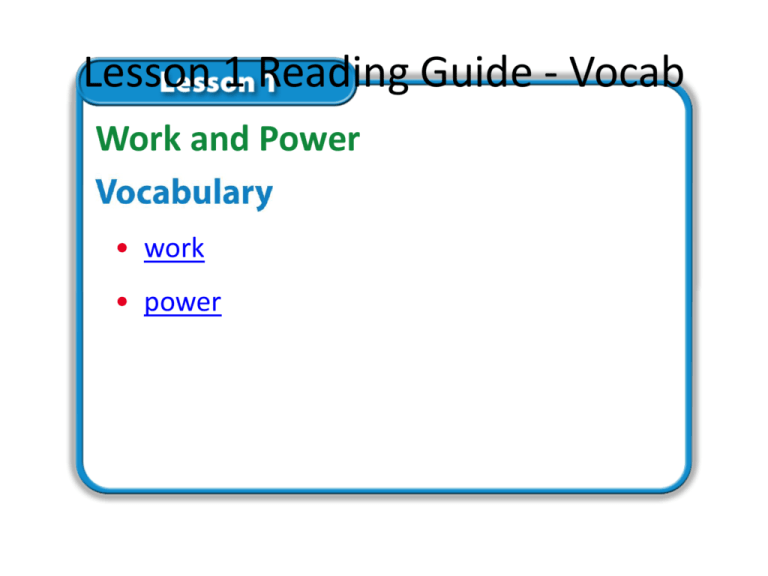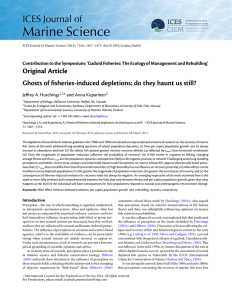Lesson 1 Reading Guide - Vocab
advertisement

Lesson 1 Reading Guide - Vocab Work and Power • work • power A. What is work? Lesson 1-1 1.Work is the transfer of energy that to an object by a force that makes an object move in the direction of the force. work from Old English weorc, means “activity” What is work?Lesson (cont.) 1-1 • 2. A weightlifter does work when exerting a force that makes weights move, but does not work to hold weights in place because the weights are not moving. Calculating Work Lesson 1-2 • B. Calculating Work • 1. You must know two things to calculate work––force and distance. • a. The force must be in newtons. • b. The distance must be in meters. • 2. A newton-meter is also called a(n) joule, which is the unit of work. • 3. The work equation uses the distance that the force acts on the object, not necessarily the total distance that the object moves. Lesson 1-2 Lesson • 4. The work done on an1-2 object depends on the direction of the force applied and the direction of the motion. Hutchings Photography/Digital Light Source Lesson • a. When the force on an1-2 object and the motion of the object are in the same direction, you multiply the total force times the total distance to determine the amount of work done. Hutchings Photography/Digital Light Source Lesson • b. When the force on an object is at a(n) angle to the direction of motion of the object, you multiply only the part of the force that is in the direction of motion times the total distance to determine the amount of work done. 1-2 Hutchings Photography/Digital Light Source • 5. The weightLesson of any object is due to the downward force of gravity on the object. • a. To lift an object, you must pull upward on the object with a force equal to the object’s weight. 1-2 Hutchings Photography/Digital Light Source • b. The work done to lift any object is equal to the weight of the object multiplied by the distance the object is lifted. Work and Energy Lesson 1-3 • 1. Doing work on an object increases transfers energy to the object. • 2. Because doing work on an object requires that the object move, doing work on the object increases its kinetic energy. • 3. Lifting an object increases the object’s gravitational potential energy. Doing work on aLesson tray transfers 1-3energy to the tray. The added energy can be either kinetic energy or potential energy. What is power? Lesson 1-4 • D. What is power? • 1. Power is the rate at which work is done. • 2. Power is determined by dividing the work done by the amount of time needed to do the work. What is power? (cont.) Lesson 1-4 • a. In the power equation work done is in joules. • b. In the power equation, time is in seconds. • c. In the power equation, power is in watts. Lesson 1-4 Lesson 1 - VS • Work is done on an object when the object moves in the direction of the applied force. • When work is done on an object, energy is transferred to the object. Hutchings Photography/Digital Light Source Lesson 1 - VS • To increase power, work must be done in less time. Hutchings Photography/Digital Light Source









